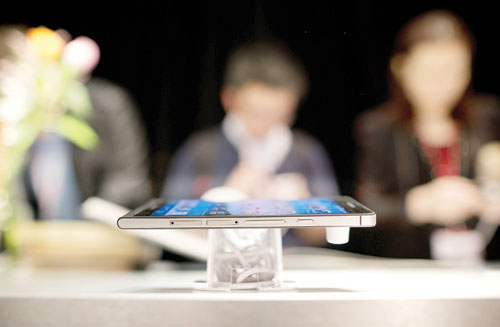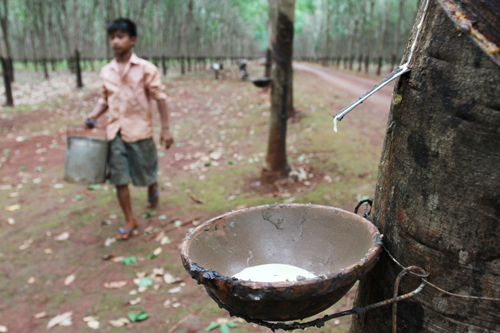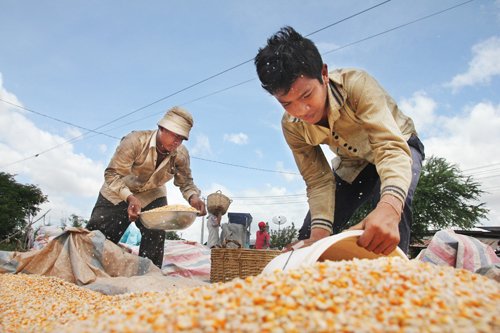‘Thinnest’ smartphone is set for debut in Cambodia
‘Thinnest’ smartphone is set for debut in Cambodia
Two days after Huawei introduced the world’s thinnest smartphone in London and Singapore, the Cambodian representative office of the China-based company announced that the sleek device would be sold in the Kingdom in July.

While the Chinese telecom giant hopes to increase its market share of smartphones in Cambodia, experts say local skepticism of Chinese brands and the fat price tag for the thin device might hurt the phone’s competitive potential.
Talking to reporters on Friday at the Huawei showroom inside Sovanna Supermarket, Jason Liu with Hauwei Cambodia said that the Ascend P6 will be available in Phnom Penh in mid-July for about $450.
“It attracts fascination on international markets, so we are optimistic in the Cambodian market as well,” Liu said.
“Ascend P6 has many special features, including [the fact that] it’s the thinnest, it has the best front-facing camera you can get right now, and many other functions.”
Huawei is throwing the device into the ring at a good time, according to market observers in Phnom Penh.
Cambodians are increasingly moving away from buying simple and low-budget phones and are willing to shell out a hefty figure for the latest in smartphone technology, with brands like Samsung and Apple the most popular.
Sales of SIM cards reached 19.7 million last year, a 21 per cent rise from the 16.2 million sold in 2011, statistics from the Ministry of Posts and Telecommunications show.
Chhim Sang Heng, general manager of HAKSE, a major mobile phone retailer in Phnom Penh, told the Post yesterday that Huawei, which is not new to the market, holds a relatively small portion of market share. “The quality [of Huawei] is good, but it is not very-well-known to many people,” Sang Heng said.
“The price range of the newest series is high, so it still [remains open] if it will succeed in the market.”
While the Ascend P6 costs about $450 per unit, the price is comparable to the Samsung Galaxy Note N5100, which now sells for $460.
Ascend P6 is cheaper than the Galaxy S4 ($599), but more expensive than the Galaxy Grand I9082, at $320 per unit.
The price, however, is competitive compared to the new iPhone 5 series. The 32GB version of the American-made product goes for $770.
But Apple may be considering a shift in strategy that could undercut the more expensive phones.
In January, Bloomberg reported that Apple plans to sell a cheaper and smaller iPhone in late 2013 at the earliest to attract more customers in developing countries.
Quoting a person familiar with the plans, the report said Apple was considering retail prices of $99 to $149 for the phone.
Be Chantra, lead organiser of Barcamp, an international network of user-generated conferences primarily focused on technology and mobile devices, said the amount of smart phones used in Cambodia is increasing because it is easier to access the internet and social networks such as Facebook and Twitter.
Chantra added that not many Cambodians know about Huawei as a brand, and many might be concerned about the quality of Chinese-made products compared to the more trusted brands of Apple and Samsung.
“If it costs $450, many might prefer to use Samsung or spend more to [buy an] iPhone because they are well known,” Chantra said.
Huawei’s brand already suffers in the US and England, where lawmakers have expressed concern that China could use Huawei infrastructure to engage in cyber attacks or spying.
But the problems do not seem to be affecting Huawei in the region.
In his 2012 book, The End of Cheap China, researcher Shaun Rein writes that the assumption that Chinese companies cannot brand and build globally is baseless.
Singling out Huawei, he writes that Chinese brands “are quickly moving up the value chain to compete on branding and innovation rather than just on price”.
phnompenh post



















